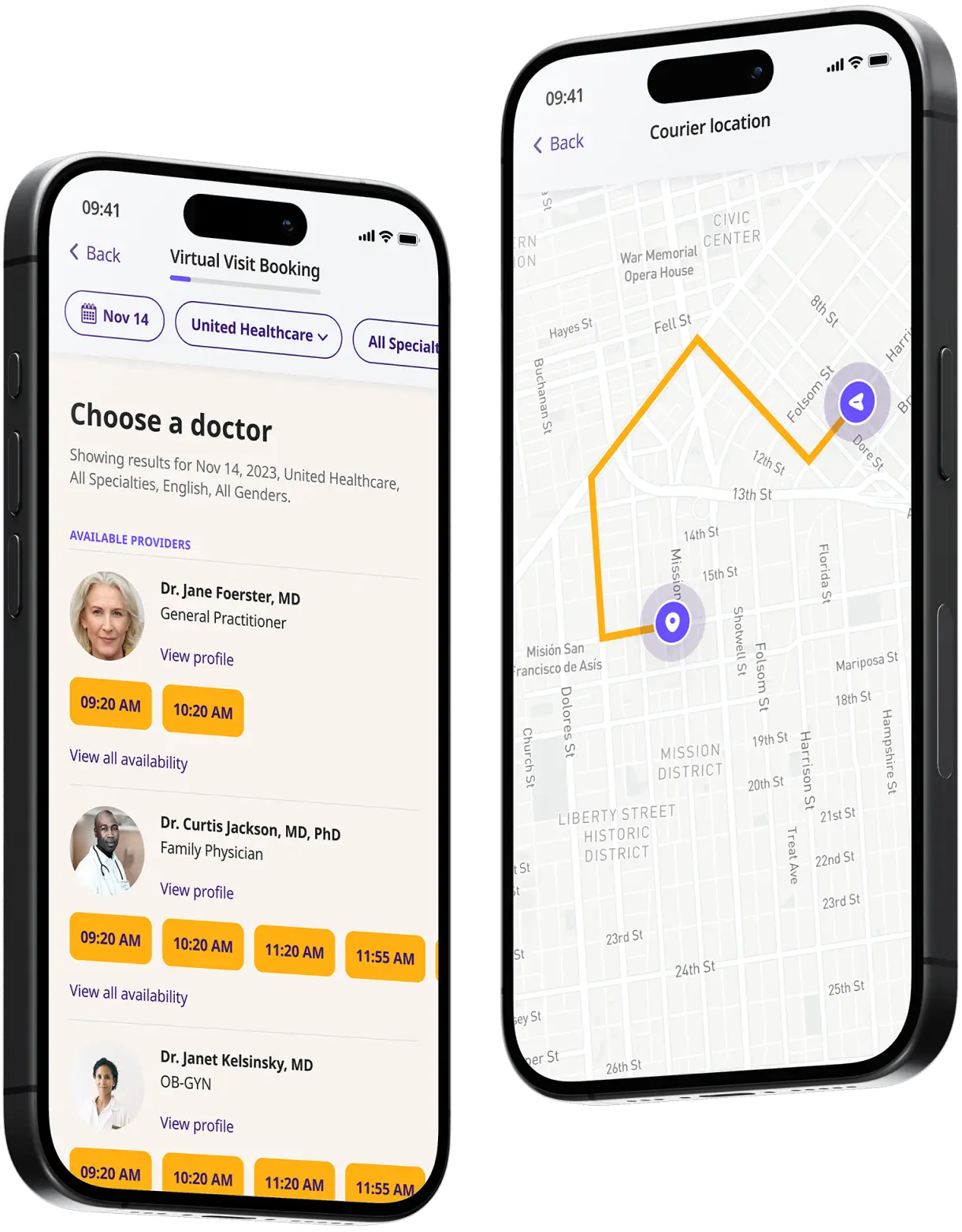Asthma Treatment Online
Get asthma treatment with ease—see an online doctor 24/7 for prescriptions, refills, and personalized care.


Available in 50 states. Insurance accepted.
Fast
virtual visits
24/7 care
assistants
Prescriptions
as needed

24/7 Personal Care
Consult with a physician in 15 minutes, refill an Rx or chat with our care assistants.

Affordable & Convenient
See your cost upfront and get treatment for hundreds of different conditions.

Insurance Accepted
We accept most major insurance plans, making healthcare easy and affordable.
See If Delivery Is Available Near You
Delivery Not Available
Enter your ZIP code to check if prescription delivery is available in your area and how soon your meds could arrive.
How to get started
Choose your doctor, start a virtual visit, and have your prescriptions sent to your preferred pharmacy for pickup — all in just a few easy steps.
Choose a doctor
Choose a physician by availability, specialty, ratings, and more.

Start your video visit
Connect with a doctor in minutes on a secure video call.

Get your prescription
Pick up your meds or have them delivered in as little as an hour.

Available in 50 states. Insurance accepted.
One-Time
Physician Visit
One-time visit with a physician for diagnosis, treatment, Rx, labs, referrals, and doctor’s notes.
Accepted Insurances
See why people turn to DrHouse...
As seen in

About Asthma
What is asthma?
Asthma is a chronic inflammatory disease of the airways in the lungs that affects millions of people worldwide.
It is characterized by recurrent episodes of wheezing, shortness of breath, chest tightness, and coughing. These symptoms are often associated with widespread but variable airflow obstruction within the lung that is often reversible either spontaneously or with treatment.
The inflammation makes the airways hypersensitive to various triggers. When exposed to these triggers, the airways narrow, making it difficult for air to pass in and out of the lungs.
Asthma is classified into several types based on triggers, symptoms, and when they occur such as:
- Allergic asthma (extrinsic asthma): Triggered by airborne allergens such as pollen, mold spores, pet dander, or dust mite debris. This is the most common type of asthma, which is often associated with hay fever or eczema.
- Non-allergic asthma (intrinsic asthma): Triggered by factors not related to allergies. These include stress, exercise, cold air, dry air, hyperventilation, smoke, viruses, or other irritants. This type of asthma typically develops later in life and does not usually run in families like allergic asthma.
- Occupational asthma: Caused by inhaling fumes, gases, dust, or other potentially harmful substances while on the job. Symptoms improve when away from the work environment.
- Nocturnal asthma: Asthma symptoms that appear to worsen at night. Triggers can include allergens in the bedroom, cooling of the airways, being in a reclining position, or hormone cycles.
- Exercise-induced bronchoconstriction (EIB): Asthma symptoms that are triggered by physical activity. Symptoms may begin during or shortly after exercise, and will often rapidly improve with rest.
Healthcare providers identify asthma as either intermittent or persistent. Intermittent asthma means that the patient experiences symptoms occasionally, while persistent asthma occurs more frequently. Exercise-induced bronchoconstriction
Asthma symptoms
The symptoms of asthma can vary in intensity and duration from person to person, but some common symptoms include:
- Wheezing
- Shortness of breath
- Difficulty breathing
- Chest tightness
- Coughing, especially at night or early morning
- Increased mucus production
Symptoms can occur suddenly or slowly over time and can range from mild to severe. Severe asthma symptoms can be life-threatening and require immediate medical attention.
Causes of asthma
The exact cause of asthma is unknown, but researchers believe that a combination of genetic and environmental factors can increase the risk of developing this condition.
Some common environmental and genetic factors can influence the development of asthma, such as:
- Genetics: Asthma tends to run in families, and people with a family history of asthma are more likely to develop the condition.
- Allergies: People with allergies have a higher risk of developing asthma. Exposure to allergens may trigger an allergic reaction that leads to inflammation in the airways.
- Respiratory infections: Certain respiratory infections can increase the risk of developing asthma, especially in children.
- Exposure to irritants: Chemicals, dust, or other air pollutants can irritate the lungs and trigger asthma symptoms.
- Obesity: Being overweight or obese increases the risk of developing asthma.
- Medication exposure at an early age: Certain medications, such as acetaminophen, have been linked to an increased risk of developing asthma.
Asthma treatment
The treatment of asthma focuses on managing symptoms and preventing flare-ups to maintain a normal, active life. It involves a combination of medications, lifestyle changes, and avoiding triggers.
Asthma medications are broadly categorized into two types: quick-relief medications for immediate symptom management and long-term control medications to prevent symptoms and manage chronic inflammation.
Quick-relief medications (rescue inhalers)
- Short-acting beta-agonists (SABAs): These are the most common quick-relief drugs for asthma symptoms and flare-ups. Examples include albuterol and levalbuterol.
- Anticholinergics: Such as ipratropium, which can help open airways quickly and are often used in combination with SABAs.
Long-term control medications
- Inhaled corticosteroids (ICS): These are the cornerstone of asthma treatment, reducing inflammation in the airways. Examples include fluticasone, budesonide, and beclomethasone.
- Long-acting beta agonists (LABAs): Used in combination with inhaled corticosteroids, LABAs such as salmeterol and formoterol help to keep the airways open for a longer period of time.
- Leukotriene modifiers: These oral medications, including montelukast and zafirlukast, help control asthma symptoms by blocking the chemicals that cause inflammation.
- Theophylline: An older medication that is used less frequently today, it helps to open the airways and decrease inflammation.
- Biologic therapies: These are newer, injectable drugs designed for severe asthma that does not respond well to other treatments. They target specific parts of the immune system to prevent inflammation. Examples include omalizumab, mepolizumab, and dupilumab.
Related services
Explore more of our services tailored to your needs and discover additional ways we can support your healthcare needs.
Frequently asked questions




